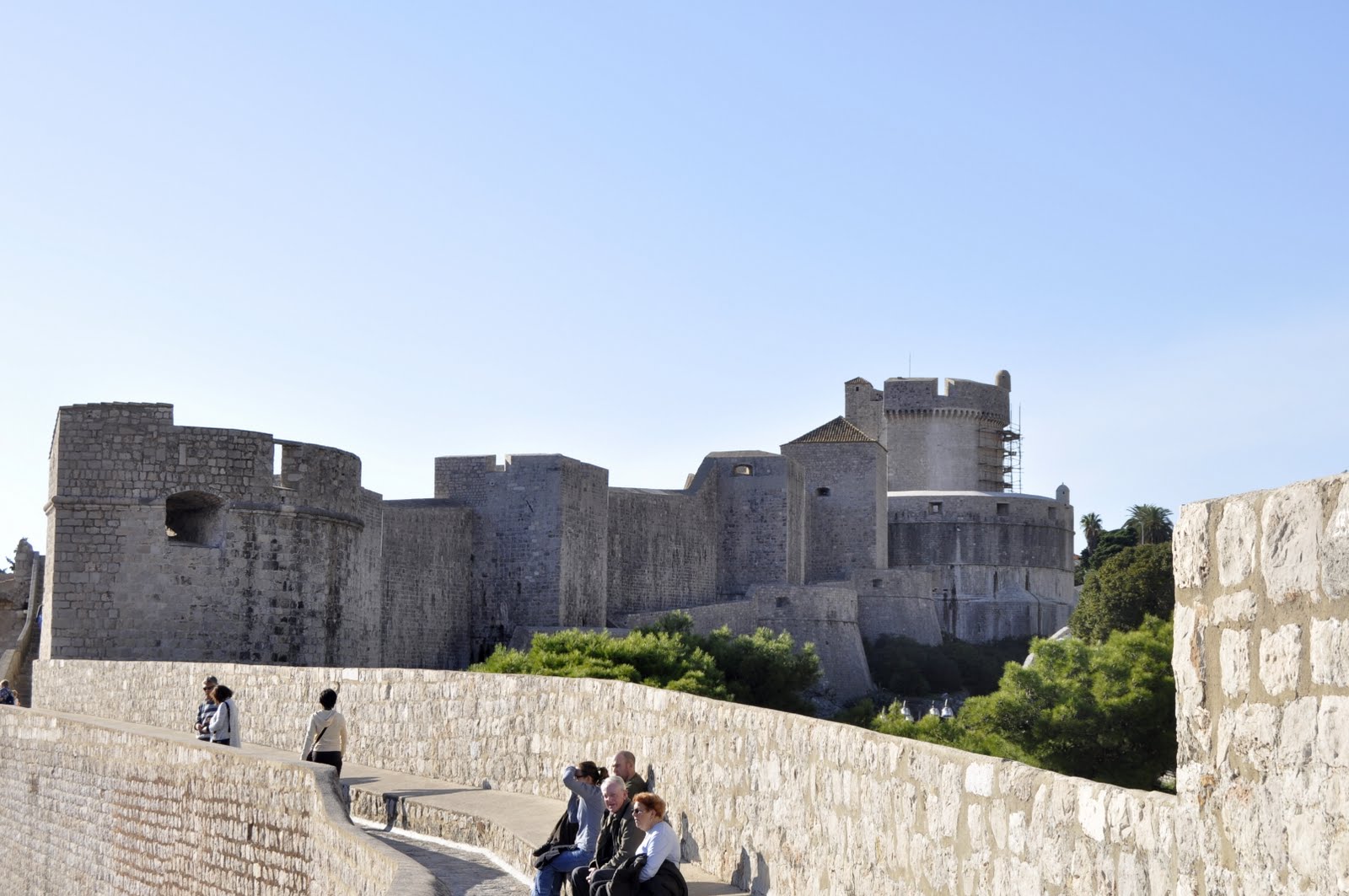These walls were a long time abuilding and today are superbly maintained. They make for a pleasant walk of just over a mile. These replaced previous defenses and were built and rebuilt from the 11th to the 14th centuries as the city expanded. The Turk threat starting in the 15th century gave Dubrovnik, like much of southern Europe, a strong incentive to further fortify its defenses, especially on the land side. Work continued into the second half of the 17th century.The Russian feet besieged the city for a month in 1806, sending over 3000 cannonballs against these walls. Using its usually trick of encouraging its enemies into destroying each other, Dubrovnik agreed to give the French safe passage to fight the Russians. They fought -- but stayed. Thus ended four centuries of this mercantile republic's independence.The stone path here rises to the highest defense, the MinÄeta Tower. Below it is a separate scarp wall designed to take the hit of an artillery attack while keeping the tower defenses intact.
First | Previous Picture | Next Picture | Last

